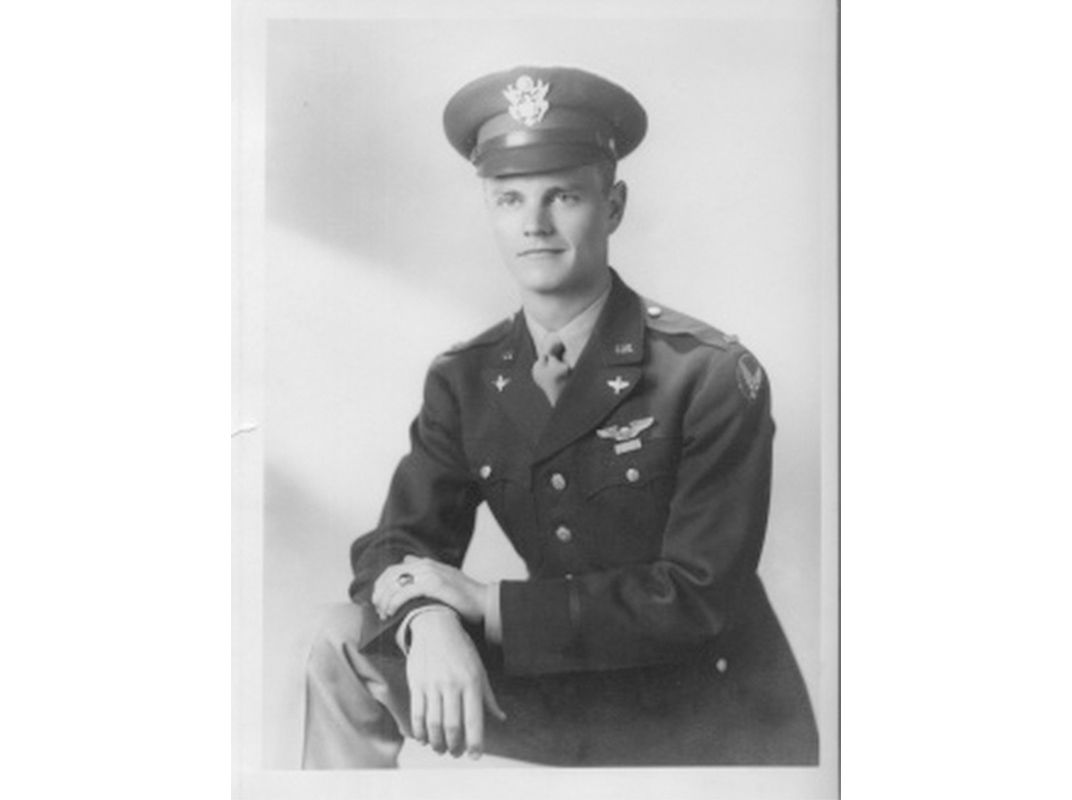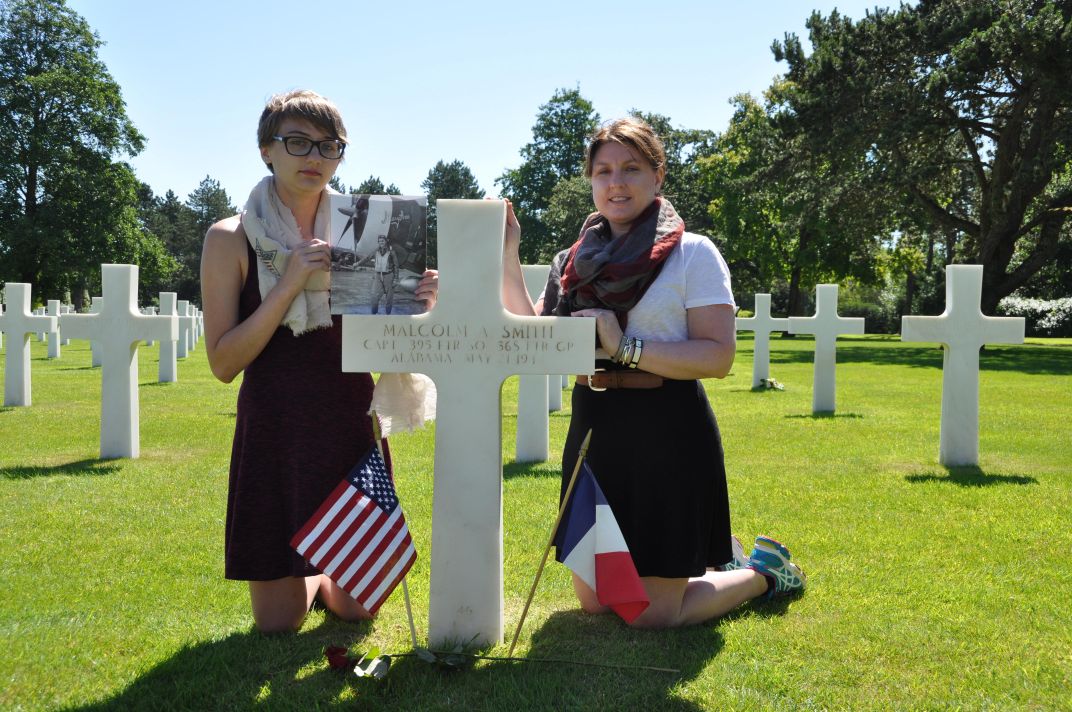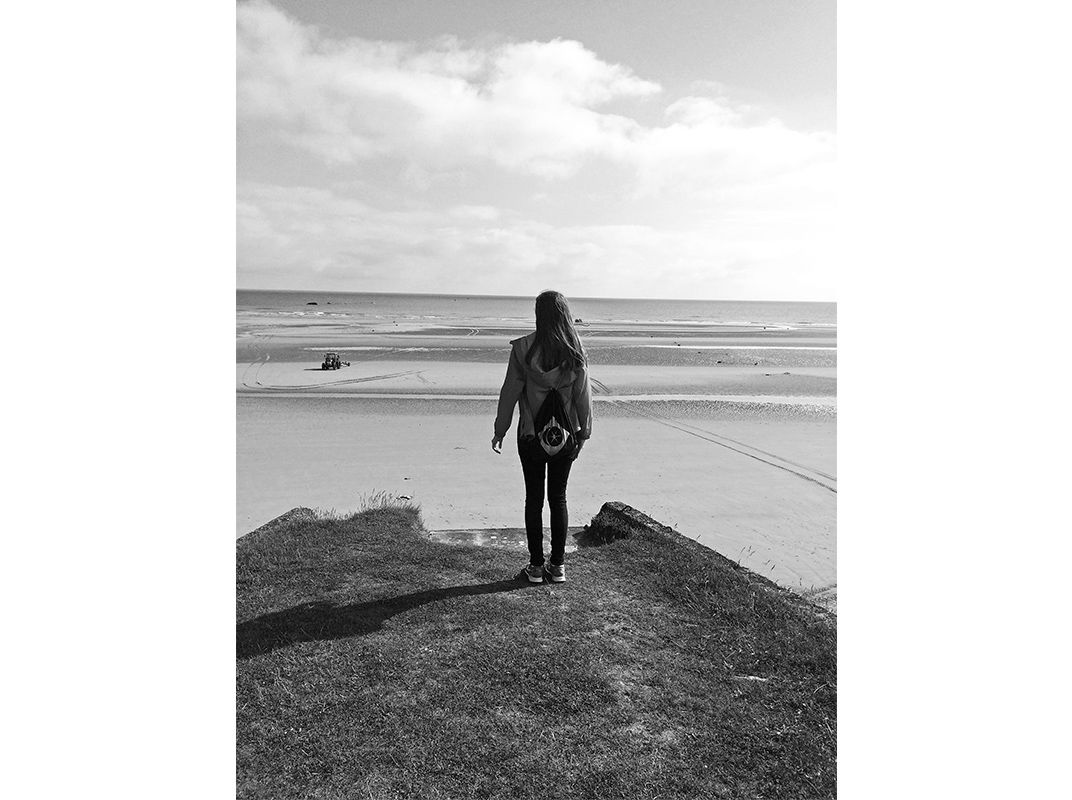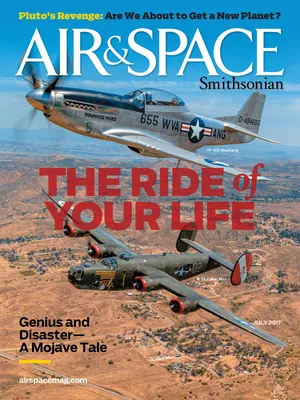Mac and Me
How I became friends with a U.S. Army Air Forces pilot who died during World War II.
/https://tf-cmsv2-smithsonianmag-media.s3.amazonaws.com/filer/6c/e8/6ce8039b-44aa-4588-9175-83c6e4e38339/01f_jj2017_normandyutahbeach_live.jpg)
How do you feel?” asked one of the institute staff members.
I answered, “Like it doesn’t deserve to be this pretty.”
That was the moment. I finally understood why we had come here. The “aha” feeling that washed over me as I stood on Utah Beach and looked over the calm surface of the English Channel was sobering. Seventy years ago, on June 6, 1944, that quiet sea roiled with infantrymen desperate to get ashore and out of the sights of the guns shelling them. The heaviest casualties were east of here. About 10,000 Allied soldiers died that day. In the nearby Normandy American Cemetery, 9,386 Americans—who had died in the weeks before the invasion, during it, and in the days after—are buried.
I was in France with a group of 15 student-teacher teams, part of a National History Day program to study the sacrifices made by U.S. servicemen during World War II. The program, called the Normandy: Sacrifice for Freedom Albert H. Small Student & Teacher Institute, focuses on a brief window of the war. Funded by and named after real estate developer and philanthropist Albert H. Small, the institute offers programs like this to connect people, especially of my generation, with American history. Our research and experience are intended to help us understand how Americans contributed to the success of the military actions on D-Day.
Each team selected a Silent Hero, a U.S. servicemember from their home state memorialized in the Normandy American Cemetery. We found one who had come from our state, Alabama: Army Air Forces Captain Malcolm A. Smith, a fighter pilot.
When I first discovered the Albert H. Small program, I admittedly was not enthusiastic. They are going to send us to France to do what? The whole idea seemed ludicrous. We were going to deliver eulogies for men we had never met, men who had been dead for 70 years. But my teacher, Mrs. Coggins, promised an unforgettable experience and, at the least, a free trip to Europe. So I took the leap and wrote an essay, sharing my belief in history as a story and how the past connects to the present and the future. Even when notified we were accepted, I still did not really get it. I was a lover of history, but I was not exactly sure how this program would help me get at the meaning of the history we were studying.
The moment I first started to truly understand was at the dining room table of my Silent Hero’s niece, June Mack. We were reading the loosely bound pages of a childhood diary kept by her uncle, who became Captain Malcolm Smith.
My teacher and I had researched Captain Smith’s family and discovered June in his lineage, and we were able to find her through a simple Google search. On May 16, 2015, we drove an hour and a half to Birmingham, Alabama, to meet June and see if she had any documents her mother, Mac’s sister, might have saved. Miraculously, her mother had held onto documents from even before the war. We got to read letters and diaries, look through photographs, and experience the life of this man through family keepsakes. We read the lightly browned pages of the letters he had written during the war, addressed to his young wife and newborn child.
For hours, I was lost in his words, and when it was time to leave, I felt as if I were leaving a friend behind. This was the first time I stopped thinking of him as “Captain Smith” and began to know him as “Mac.” Mac was assigned to the 368th Fighter Group and flew P-47 Thunderbolts. He was killed in action on May 21, 1944.
One month after our visit, in June 2015, we traveled to Washington, D.C., where I met the other students and found that they had similar stories to share. We referred to our Silent Heroes as “our soldiers” and brought them up in conversation casually, as you would a brother or cousin. We had studied their lives, researched their military careers, written brief biographies, and sometimes met their descendants. They may have been dead for 70 years, but they had become a part of us, and we spoke of them as if we had known them while they lived. It was almost as if they were living again.
Throughout our time in D.C., we had dinners with veterans, attended lectures by experts, watched ceremonies at memorials—all pieces of the puzzle. The gravity of what we were doing began to soak in slowly.
Then we were in France, staring down from German bunkers, easily imagining the screams of artillery shells and men alike on the serene beaches below. Standing at the edge of the cliffs, gazing into craters left behind by bombs, wandering through graveyards of both friend and foe, we saw lines blur. Following the footsteps of these men whom we had come to know, we began to experience a new feeling that shrouded our final day, the one in which we would visit the Normandy American Cemetery. The feeling was anticipation. I felt that I was going to actually meet Mac. He was there.
It is difficult to describe—the moment we all stood together at the cemetery, in the shadow of the statue, Spirit of American Youth Rising from the Waves, listening to “Taps.” Even more difficult to explain is the moment I placed my hands on the grave of my Silent Hero and felt as if our times, his and mine, were not so far apart. In these moments, with flags and rose in hand, I truly got it. This was where he died. This was where he gave everything, where all of the Silent Heroes gave everything.
We put faces and stories to these names. And that made it clear: Sacrifice is not a distant, “over there” thing. Sacrifice is a part of us. It shapes histories and molds futures—my future, and yours.



